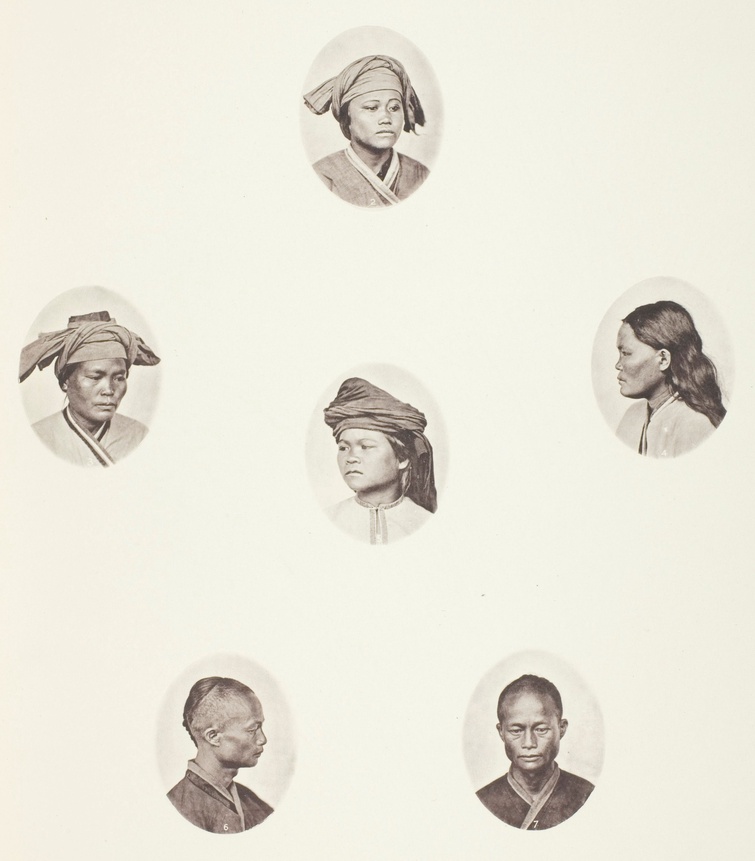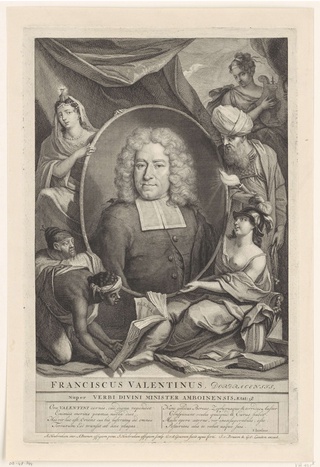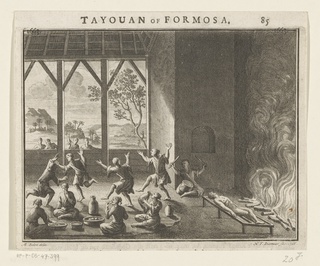Illustrating Taiwan: Travelogues and Their Visual Narratives
By Chin-Jie Melodie Liu•August 2024•12 Minute Read

John Thomson Scottish, Pepohoan Female Head; Pepohoan Female Head; Pepohoan Female Head; Pepohoan Female Head; Pepohoan Male Head; Pepohoan Male Head, c.1868. Art Institute of Chicago, public domain.
In the 18th and 19th centuries, travelers to colonial Taiwan produced and published accounts of their visit in travelogues, detailing experiences and encounters. These accounts documented their journeys extensively, providing narratives that were often illustrated with images in the form of prints and later, photographs.
Introduction
Taiwan has a layered and complex history marked by multiple waves of colonization.1 Among the Dutch, Spanish, Han Chinese, and Japanese settlers were many visitors who documented their journeys and published illustrated accounts. This article investigates how seminal travelogues created in the 18th and 19th centuries shaped colonial perspectives on Taiwan. The essay will further examine the depiction of the Indigenous Taiwanese population in prints and photographs from the travelogues.
Travelogues in Word and Picture
Travelers have long recorded places visited and people encountered, in a range of dynamic literary forms. As an expansive genre, travelogues are not limited to essays, poems, memoirs, letters, field notes, and short stories.2 3 Sketches, prints, and photographs often accompany travel literature to enrich and reinforce the written narratives.
Shaping Colonial Narratives
Beyond personal journaling, travel writing was also used to promote and legitimize colonization with detailed accounts of conquered lands and the practices of colonized people. Various agents of the colonial project—leaders or rulers; frontier employees; intermediaries like traders, missionaries, and diplomats; and independent observers—produced travelogues with varying intentions and outcomes.4 Some wrote to inform and impress a monarch, while others documented and published their experiences for a wide readership.5
Public interest in travelogues from faraway lands grew in Europe in the late 17th century as colonial expansion brought in more imported products.6 These publications played a critical role in shaping the Western European perception of foreign worlds and cultures and offered insight into ethnography, geography, commerce, agriculture, and flora and fauna.7 While the position of “Europeans [mapping] the world” often made for reductive narratives, travelogues nonetheless offer distinct and valuable sociopolitical insights into the eras that produced them.8 Meanwhile, the European domestic audience was unable to verify these often fantastic first-hand accounts, and sometimes treated them as fiction.9
Old and New East Indies
François Valentijn, a colonial minister with the Dutch East India Company (VOC), published Oud en nieuw Oost-Indië, a five-part, eight-volume book, from 1724 to 1726. Its subtitle promised that it contained “an accurate and comprehensive treatment of Dutch power" in the so-called Old and New East Indies. Considered an encyclopedia, the book was based on Valentijn’s own travels and included excerpts on the Dutch East Indies (present-day Southeast Asia) written by former VOC colleagues, as well as previously unpublished VOC material with statistics and geographical studies. Oud en nieuw Oost-Indië became the single authoritative reference on Asia, and remained so until the 19th century, with some of the most accurate maps of the East Indies at the time. Valentijn’s travelogue, widely read by the public and used as a reference by VOC officials, was instrumental in forming the European view of the region.10
Valentijn created the work as a private citizen to share knowledge about the colonies with Dutch readers, who previously had limited access to information on the East Indies. He highlighted his personal opinions—often in the form of exoticized descriptions.11
Oud en nieuw Oost-Indië includes a chapter on Taiwan with geographical and climate information on the then-former Dutch territory, customs and practices of the Indigenous population, and historical events of Dutch settlement, trade, and governance.12 13
This engraving depicting an unspecified Indigenous funerary ritual is the only visual representation of Taiwanese people in Oud en nieuw Oost-Indië. The section title at the top of the image, “Tayouan of Formosa,” refers to the multiple names of Taiwan. “Tayouan” derives from the ethnonym of an unidentified Indigenous group and was frequently applied to the area of the VOC commercial post.14 The name “Formosa” dates to the 16th century when Portuguese navigators called Taiwan “Ilha Formosa” (Beautiful Island), a title that Europeans adopted.15
The illustration depicts a ritual beside an uncovered corpse drying near a bonfire inside a large hall with tall windows overlooking a mountainous landscape. Relatives of the deceased, as the caption identifies, are gathered nearby. Some are eating and drinking from jars and baskets on a round mat while others dance to a drummer’s music. Onlookers dressed in a similar fashion wave to them and observe the rite through the windows.
The image was drawn in 1726, back in Holland, based not on direct observation but on Valentijn's accounts. There are indications that multiple illustrations in Oud en nieuw Oost-Indië were revised to visually enhance and reinforce Valentijn’s point of view.16 The print was featured in the “Religion” section, where the beliefs and practices of “Formosans” are compared to “the knowledge of the truth” of the Dutch Reformed Church. In Valentijn’s report, “Formosans” are said to “call upon their gods with a horrible praying and shouting, so frantically that their eyes bulge out of their heads, looking like mad and possessed figures.” Valentijn’s exaggerated language characterizes the narratives used to portray colonial Taiwan.
Photography in Travelogues
In the 19th century, photography became more portable, accessible, and widespread. The camera’s ability to directly record was presumed to remove the subjectivity of the observer and produce a “true” image, as compared to artists’ illustrations. Photographs could also be reproduced rapidly, allowing for the commercialization and swift circulation of tourist and colonial imagery in mass media.17 The colonial European public was fascinated by the novel medium’s “accurate” and “scientific” visual record of worlds less traveled.18
Illustrations of China and its People

In Scottish photographer John Thomson’s acclaimed work, Illustrations of China and its People (1873–74), he cited the medium’s ability to “convey an accurate impression” and wrote that he was “indebted for the faithful reproduction of the scenes [he] visited, and of the types of race with which [he] came into contact.” The publication included 200 of Thomson’s photographs, which accompanied written observations about his journey through China, including Taiwan, which was still under the Qing dynasty at the time.
Early images of Imperial China by Western photographers covered limited aspects of Chinese life and were of poor quality.19 Circulation was also minimal, with albums being kept for personal use and later remaining in family archives.20 Thomson, on the other hand, was a professional photographer who established a commercial studio in Hong Kong in 1868. He aimed to illustrate his travels and capture the “arts, usages, and manners” of people across the Empire.21
Thomson’s documentation of Taiwan is a stark departure from the fanciful pre-photographic depictions of the region, and captures the landscape and Indigenous population with previously unused methods. In the series of six oval cameo portraits of Pepohoan (commonly referred to as the Pingpu or Plains Indigenous people) women and men, the subjects avoid looking directly at the lens and wear somber expressions. Portraiture photography with a plain background, where subjects are isolated from their environment, was commonly used to “objectively” document aboriginal people.22 The curated composition of the images on the page and the decision to include side profiles made in an ethnographic manner are of course subjective, conceived with a colonial mindset not far from that of Valentijn. While some have praised Thomson’s photographs for “showing a rare sensitivity” compared to his peers, his work still transmits the colonial gaze.23
The complementary written entry titled “The Natives of Formosa” distinguishes the Pingpu as “the most advanced types of those semi-civilized aborigines, who conform so far to Chinese customs,” particularly in the way men wore their hair in the Qing queue style (seen above). Thomson also theorizes their link to Malays through appearance and language, with a chart of how numbers are pronounced in Melanesian and Taiwanese language groups. This was later proven to be accurate, as Taiwan has been identified as the starting point of Austronesian languages—demonstrating how empirical observations in travelogues provided valuable references.24

Other photographs, such as the four here, present more than headshots, with a mother carrying her child, a pair where one is smoking a bamboo pipe, and children in front of their dwelling. While these images seem more relaxed, the subjects are still placed and posed to demonstrate the different types of Taiwanese “civilizations,” with two Pingpu women on the top left compared with those of the Baksa (木柵) and Lakoli (六龜區) regions in the other three. Additional descriptions scrutinize Pingpu religion, way of life, and facial appearance, where descriptions like “well formed” and “haggard” are used to refer to women of different ages.
Emile and Auguste Tilly, L'Expedition Francaise dans L'Extrême-Orient, 1885. Engraving, after photographs by John Thomson. Reed University, public domain. An engraving showing a number of illustrations of Taiwanese people, formally posed or pictured candidly near thatched buildings.
Thomson’s work circulated widely through his book, as well as in print media such as The Journal of the Royal Geographical Society of London and L’Illustration, a weekly French newspaper distributed in 150 countries. The image above appeared in L’Illustration in 1885, reproducing Thomson’s photographs as engravings in a unique montage of the inhabitants of Taiwan, including an Amoy couple who are labeled as the “Chinese of Formosa.” Titled “L'Expédition Française dans L'Extrême-Orient” (The French Expedition in the Far East), the article was printed during the Keelung campaign (1884–1885) of the Sino-French War when French forces occupied north Taiwan. The previous page introduces the short-lived “new territory” and its people based on a summary of Thomson’s observations of the Pingpu population. The recasting of Thomson’s materials as “documents” of the French expedition demonstrates how travelogues were not only made to share travel accounts with audiences but also reinforced singular colonial narratives.
Evaluating the Travelogue’s Colonial Narrative
The images published in travelogues were created to be viewed within the context of written narratives. The compositions of each page offering juxtaposed photos, allowing a sort of comparing and contrasting, were often influenced by the colonial gaze. The texts, including image captions, played a role in changing the meaning of the artworks, which in turn shaped colonial understanding of the documented places. The increase in the production and dissemination of travel literature came hand in hand with expanding empires.
While some records have been proven to be factual, the observations in colonial travelogues were nonetheless tinged with imperial attitudes and framed by the colonizer’s own context. It is critical to reflect upon the notion of accuracy and bias not only within the complex constructed narratives of travelogues but also in the interpretation of reports of foreign cultures and peoples.
Chin-Jie Melodie Liu is a 2024 Curationist Fellow. She is a Taiwanese-American artist/curator and writer based in Kamberri/Canberra, Australia. Her research and interdisciplinary practice is informed by her heritage with a focus on contested histories and collective memory. She is interested in varying forms of creative collaboration and the use of text as visual material.
Liu is Publication Manager at Art Monthly Australasia, Australasia’s flagship visual arts publication, and the Events & Collections Officer at the Australian Centre on China in the World at the Australian National University (ANU), where she manages the centre's gallery and collection.
She holds a Master of Museum and Heritage Studies and a double degree with a Bachelor of Visual Arts (First Class Honours) and a Bachelor of Arts (French & International Relations) from the ANU. Liu studied at the École nationale supérieure des beaux-arts de Paris on exchange in 2019.
Citations
Colonization in Taiwan included the Dutch (1624–1662, 1664–1668), Spanish (1626−42), Han Chinese Koxinga (also known as Zheng Chenggong) (1662−83), Qing Empire (1684−1895) and the Japanese (1895–1945).
Baldick, Chris. "travelogue." The Oxford Dictionary of Literary Terms, Oxford University Press, 2015. Oxford Reference, https://www-oxfordreference-com.virtual.anu.edu.au/view/10.1093/acref/9780198715443.001.0001/acref-9780198715443-e-1162. Accessed 10 May 2024.
Pettinger, Alasdair. "Travelogues." Encyclopedia of Western Colonialism since 1450, edited by Thomas Benjamin, vol. 3, Gale ed., Macmillan Reference USA, 2007.
Pettinger.
Pettinger.
Arasaratnam, Sinnappah. “Introduction.” François Valentijn’s Description of Ceylon, edited by Sinnappah Arasaratnam, Routledge, 1978, p. 59.
Dym, Jordana. "Travel Literature." Encyclopedia of Latin American History and Culture, edited by Jay Kinsbruner and Erick D. Langer, 2nd ed., vol. 6, Charles Scribner's Sons, 2008, pp. 129-132.
Clark, Steve. “Introduction.” Travel Writing & Empire: Postcolonial Theory in Transit, edited by Steve Clark, Zed Books, 1999, p. 3.
Clark, p. 1.
Habiboe, R. F. F. "Valentijn, François." Encyclopedia of Western Colonialism since 1450, edited by Thomas Benjamin, vol. 3, Gale ed., Macmillan Reference, 2007.
Arasaratnam, pp. 58-59.
Chien, Hung-yi, “A Study of François Valentyn's Formosan Ethnography: Sources, Relations, and His Personal Opinions.” 歷史臺灣:國立臺灣歷史博物館館刊, Issue 17, 2019, pp. 111-134, .
This chapter includes abridged excerpts from the last governor of Taiwan Frederick Coyett’s book, 't verwaerloosde Formosa (Neglected Formosa)(1675), which was written to defend his decision to surrender of the VOC territory in 1662 to Chinese general Koxinga, detailing VOC policy errors and enemy strengths.
Mair, Victor H., “How to Forget Your Mother Tongue and Remember Your National Language.” pinyin.info, https://pinyin.info/readings/mair/taiwanese.html#n4. Accessed 1 June 2024.
Davidson, James Wheeler. “Formosa Under the Dutch.” The Island of Formosa Past and Present. History, People, Resources, and Commercial Prospects. Tea, Camphor, Sugar, Gold, Coal, Sulphur, Economical Plants, and Other Productions, Macmillan & Co and Kelly & Walsh, 1903, p. 10.
Huigen, Siegfried. "Natural History for liefhebbers in Valentyn’s Description of Animals from Amboina." Shaping a Dutch East Indies, Brill, 2023, pp. 115–153, https://doi-org.virtual.anu.edu.au/10.1163/9789004545816_002.
Maxwell, Anne. Colonial Photography & Exhibitions: Representations of the ‘Native’ and the Making of European Identities. Leicester University Press, 1999, p. 10.
Maxwell, p. 10.
Thiriez, Régine. Barbarian Lens: Western Photographers of the Qianlong Emperor’s European Palaces. Gordon and Breach Publishers, 1998, p. 5.
Thiriez.
Thomson, John. Illustrations of China and its people: a series of two hundred photographs, with letterpress descriptive of the places and people represented. London, Sampson Low, Marston, Low, and Searle, vol. 2, 1873-1874.
Maxwell.
Thiriez, p. 13.
Chen, Victoria., “Linguistics locates the beginnings of the Austronesian expansion – with Indigenous seafaring people in eastern Taiwan.” The Conversation, https://theconversation.com/linguistics-locates-the-beginnings-of-the-austronesian-expansion-with-indigenous-seafaring-people-in-eastern-taiwan-186547. Accessed 26 June 2024.
Chin-Jie Melodie Liu is a 2024 Curationist Fellow. She is a Taiwanese-American artist/curator and writer based in Kamberri/Canberra, Australia. Her research and interdisciplinary practice is informed by her heritage with a focus on contested histories and collective memory. She is interested in varying forms of creative collaboration and the use of text as visual material.
Liu is Publication Manager at Art Monthly Australasia, Australasia’s flagship visual arts publication, and the Events & Collections Officer at the Australian Centre on China in the World at the Australian National University (ANU), where she manages the centre's gallery and collection.
She holds a Master of Museum and Heritage Studies and a double degree with a Bachelor of Visual Arts (First Class Honours) and a Bachelor of Arts (French & International Relations) from the ANU. Liu studied at the École nationale supérieure des beaux-arts de Paris on exchange in 2019.


